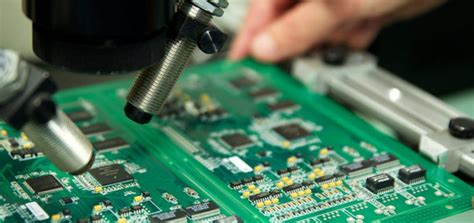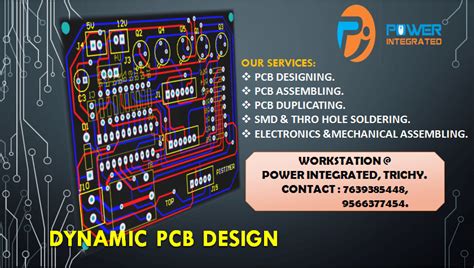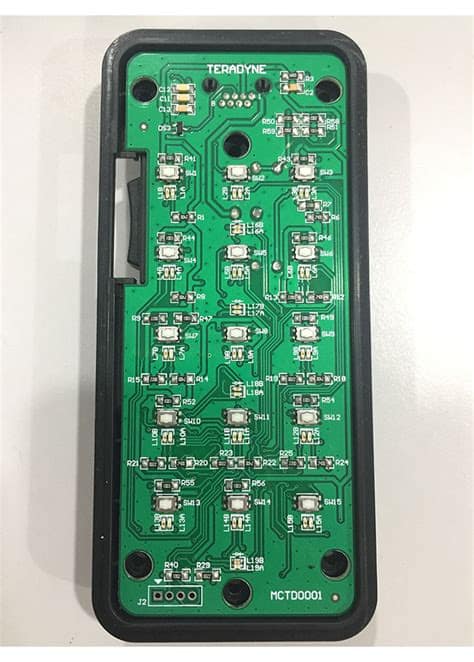What is PCB-EdCreation?
PCB-EdCreation refers to the process of creating educational content specifically focused on PCB design. This content can take various forms, such as written tutorials, video guides, interactive simulations, or even hands-on workshops. The primary goal of PCB-EdCreation is to provide learners with accessible and engaging resources to acquire and enhance their PCB design skills.
Benefits of PCB-EdCreation
1. Accessible Learning
One of the key advantages of PCB-EdCreation is its accessibility. By creating digital content, educators can reach a wider audience, regardless of geographical location. Learners can access the material at their own pace, allowing them to learn PCB design concepts and techniques whenever and wherever convenient.
2. Engaging and Interactive
PCB-EdCreation offers the opportunity to create engaging and interactive learning experiences. Through the use of multimedia elements, such as videos, animations, and interactive simulations, learners can visualize and interact with PCB design concepts in a more immersive way. This approach can help learners grasp complex ideas more easily and retain the information better.
3. Collaborative Learning
Content creation also fosters collaborative learning. By sharing their knowledge and experiences through PCB-EdCreation, experts and experienced designers can contribute to the growth of the PCB design community. Learners can engage with the content, ask questions, and participate in discussions, creating a vibrant and supportive learning environment.
4. Skill Development
PCB-EdCreation focuses on developing practical skills essential for PCB design. By providing step-by-step tutorials, real-world examples, and hands-on projects, learners can gain hands-on experience and develop their design skills. This practical approach helps bridge the gap between theoretical knowledge and real-world application.

Content Formats for PCB-EdCreation
1. Written Tutorials
Written tutorials are a classic format for PCB-EdCreation. These tutorials can cover a wide range of topics, from basic PCB design principles to advanced techniques. They often include step-by-step instructions, illustrations, and code snippets to guide learners through the design process. Written tutorials are easily accessible and can be referenced whenever needed.
2. Video Guides
Video guides are a powerful medium for PCB-EdCreation. They allow educators to demonstrate PCB design techniques visually, making it easier for learners to understand and follow along. Video guides can include screen recordings, live demonstrations, or animated explanations. They are particularly useful for showcasing complex concepts or workflows that may be challenging to convey through written instructions alone.
3. Interactive Simulations
Interactive simulations provide learners with a hands-on experience in PCB design without the need for physical hardware. These simulations allow learners to experiment with different design parameters, component placement, and routing options. They can observe the behavior of the circuit in real-time and make adjustments accordingly. Interactive simulations are valuable tools for exploring PCB design concepts and developing problem-solving skills.
4. Hands-on Workshops
Hands-on workshops offer a more immersive and collaborative learning experience. These workshops can be conducted in-person or virtually, allowing learners to work on real PCB design projects under the guidance of experienced instructors. Workshops provide an opportunity for learners to ask questions, receive feedback, and collaborate with fellow participants. They are particularly effective for teaching practical skills and fostering a sense of community among learners.

Creating Effective PCB-EdCreation Content
To create effective PCB-EdCreation content, consider the following guidelines:
-
Define Learning Objectives: Clearly outline the learning objectives for each piece of content. This helps in structuring the material and ensuring that it aligns with the desired outcomes.
-
Know Your Audience: Understand the target audience for your content. Consider their level of expertise, learning preferences, and specific needs. Tailor the content accordingly to make it relevant and accessible.
-
Use Clear and Concise Language: Explain PCB design concepts using clear and concise language. Avoid using jargon or technical terms without proper explanation. Use analogies and real-world examples to make complex ideas more relatable.
-
Incorporate Visual Aids: Utilize visual aids such as diagrams, schematics, and illustrations to enhance understanding. Visual representations can help learners grasp abstract concepts more easily.
-
Provide Practical Examples: Include practical examples and case studies to demonstrate the application of PCB design principles. Show how the concepts translate into real-world scenarios to make the learning more relevant and engaging.
-
Encourage Interaction and Feedback: Incorporate interactive elements and encourage learners to engage with the content. Provide opportunities for questions, discussions, and feedback to foster a collaborative learning environment.
-
Regularly Update and Improve: Keep the content up to date with the latest advancements and best practices in PCB design. Continuously seek feedback from learners and update the content accordingly to ensure its relevance and effectiveness.

Frequently Asked Questions (FAQ)
1. What are the prerequisites for learning PCB design through PCB-EdCreation?
While having a basic understanding of electronics and circuit theory is beneficial, PCB-EdCreation content is often designed to cater to learners with varying levels of expertise. Many resources provide introductory material and gradually progress to more advanced topics, making it accessible for beginners as well.
2. Can PCB-EdCreation replace traditional classroom learning?
PCB-EdCreation can complement traditional classroom learning by providing additional resources and flexibility. While classroom learning offers structured guidance and face-to-face interaction, PCB-EdCreation allows learners to explore and reinforce concepts at their own pace. A combination of both approaches can lead to a well-rounded learning experience.
3. Are there any specific software tools required for PCB-EdCreation?
The software tools required for PCB-EdCreation depend on the specific content format. For written tutorials and video guides, basic word processing and video editing software may suffice. Interactive simulations and hands-on workshops may require specialized PCB design software. However, many PCB design software tools offer free or educational versions that can be used for learning purposes.
4. How can I find quality PCB-EdCreation content?
There are various online platforms and communities dedicated to PCB design education. Some popular resources include electronics forums, online learning platforms (e.g., Coursera, Udemy), YouTube channels, and PCB design blogs. Look for content created by experienced designers, educational institutions, or reputable organizations in the electronics industry.
5. Can PCB-EdCreation help me prepare for a career in PCB design?
Absolutely! PCB-EdCreation content is designed to provide practical skills and knowledge required for a career in PCB design. By actively engaging with the content, working on projects, and building a portfolio, you can demonstrate your proficiency to potential employers. PCB-EdCreation can also help you stay updated with the latest industry trends and techniques, enhancing your professional growth.
| Content Format | Advantages | Considerations |
|---|---|---|
| Written Tutorials | – Easily accessible and referenceable | – May lack visual demonstrations |
| – Suitable for step-by-step instructions | – Requires clear and concise writing | |
| —————— | ————————————————— | ————————————————– |
| Video Guides | – Visual demonstrations of concepts and techniques | – Requires video production skills |
| – Engaging and easy to follow along | – May be time-consuming to create | |
| —————— | ————————————————— | ————————————————– |
| Interactive | – Hands-on learning experience | – Requires specialized software or platforms |
| Simulations | – Allows experimentation and real-time feedback | – May have a learning curve for users |
| —————— | ————————————————— | ————————————————– |
| Hands-on | – Immersive and collaborative learning | – Requires physical presence or virtual setup |
| Workshops | – Opportunity for direct guidance and feedback | – Limited scalability compared to digital content |
Conclusion
PCB-EdCreation offers a powerful approach to PCB design education by leveraging various content formats and platforms. By creating accessible, engaging, and practical learning resources, educators can empower aspiring PCB designers to acquire the skills and knowledge needed to succeed in this field. Whether through written tutorials, video guides, interactive simulations, or hands-on workshops, PCB-EdCreation has the potential to revolutionize the way we learn and teach PCB design. As the electronics industry continues to evolve, investing in PCB-EdCreation will be crucial in nurturing the next generation of skilled PCB designers and driving innovation in the field.

No responses yet